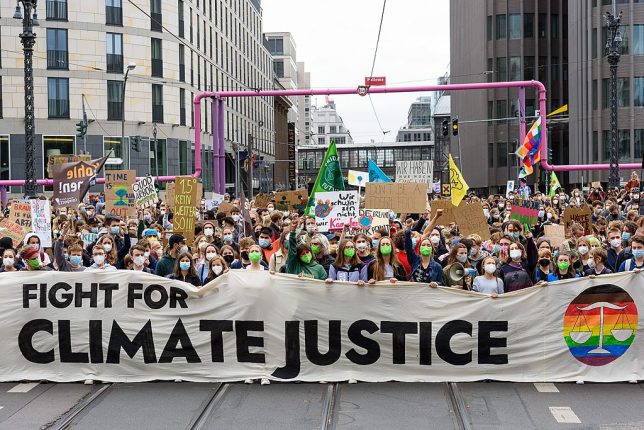As the world faces increasingly severe climate impacts, governments and corporations are being held accountable through a surge of climate-related lawsuits. A recent study, Research Areas for Climate Litigation, conducted by the Union of Concerned Scientists (UCS) in September 2024, highlights the critical role of climate litigation in driving action where traditional policy-making has often fallen short.
The Rise of Climate Litigation
Since 2015, more than 1,800 climate-related lawsuits have been filed worldwide, with at least 230 new cases in 2023 alone. The United States, United Kingdom, and Australia have become the primary hubs for this legal activity, while other regions, especially parts of Africa, have seen limited litigation.
The UCS study emphasizes that this growing body of legal action requires strong scientific evidence to be effective. To that end, scientists and researchers are increasingly collaborating with legal teams to provide the necessary data, helping courts make informed decisions on climate cases. The study aims to bridge gaps between science and law by identifying key research priorities that can strengthen future litigation efforts.
Key Research Areas for Climate Litigation
The study highlights three priority research areas that are essential for advancing climate lawsuits:
- Attribution Science: This field connects specific climate impacts to particular sources of emissions. Courts need this science to establish a clear causal link between climate change and its effects, such as extreme weather events. The study calls for more geographically diverse research, particularly in regions like the Global South, where climate data is scarce.
- Climate Change and Human Health: Legal arguments are increasingly focusing on the health impacts of climate change. Vulnerable groups, including older adults, infants, people with disabilities, and those in poverty, are especially at risk from worsening air quality, heatwaves, and water scarcity. The study points to a need for more research linking climate change to health outcomes like asthma, cardiovascular diseases, and heat-related illnesses.
- Economic Modeling: Courts rely on economic data to assess the costs of climate change. This includes not only the direct damages caused by extreme weather events but also the costs of adapting to a changing climate and the economic opportunities lost due to inaction. The study calls for robust economic modeling that can predict future costs and benefits under different climate scenarios.
Strategic Research Areas for the Future
Beyond the priority areas, the study identifies five strategic research areas where further scientific evidence is needed to support climate litigation:
- Legal and Financial Accountability: Holding corporations accountable for their emissions, particularly in industries like fashion and cement, requires more detailed research on how financial institutions contribute to climate change by funding fossil fuel projects.
- Disinformation and Greenwashing: The study stresses the importance of exposing and countering misleading claims made by corporations about their environmental practices, which can mislead consumers and delay meaningful climate action.
- Fair Share Analysis and Compliance: Understanding whether corporations and nations are meeting their climate goals is critical. The study highlights the need for standardized emissions metrics and tracking, especially for corporations with complex supply chains.
- Environmental and Social Impacts: Research on how climate change affects ecosystems, biodiversity, and human communities—especially in remote regions with limited data—is vital for comprehensive environmental impact assessments.
- Emissions Accounting and Reductions: Courts need better methods for tracking and reducing emissions, particularly those related to the indirect effects of products, known as Scope 3 emissions. The study also calls for research into the effectiveness of renewable energy credits and other mitigation strategies.
Losses and Damages: A Cross-Cutting Theme
One of the study’s most important cross-cutting themes is losses and damages—the economic and non-economic harms caused by climate change that can’t be prevented through adaptation or mitigation. The study calls for more research to quantify these losses, especially in terms of intangible cultural heritage, social structures, and ways of life. Understanding these losses is critical for communities seeking reparations for the damage caused by climate change.
Why This Study Matters
As climate litigation accelerates globally, the need for solid scientific research to support these cases becomes more urgent. The UCS study provides a roadmap for scientists looking to contribute to the legal battle against climate change by focusing on areas where their work can have the greatest impact. This research will not only improve the effectiveness of climate lawsuits but also push governments and corporations to take more meaningful climate action.
Summing Up
Climate litigation is emerging as a powerful tool in the fight against climate change. With over 1,800 lawsuits filed since 2015, the legal community is increasingly relying on science to prove the connections between climate change, its impacts, and the entities responsible. The Union of Concerned Scientists’ 2024 study highlights the critical research areas—such as attribution science, health impacts, and economic modeling—that will strengthen these legal efforts.
For those interested in how climate change is being addressed through legal channels, this study underscores the vital role that science plays in holding governments and corporations accountable. As the impacts of climate change worsen, the importance of this intersection between science and law will only grow.
Source: Merner, L. D., Phillips, C. A., & Mulvey, K. (2024). Research areas for climate litigation: 2024 report. Union of Concerned Scientists.

